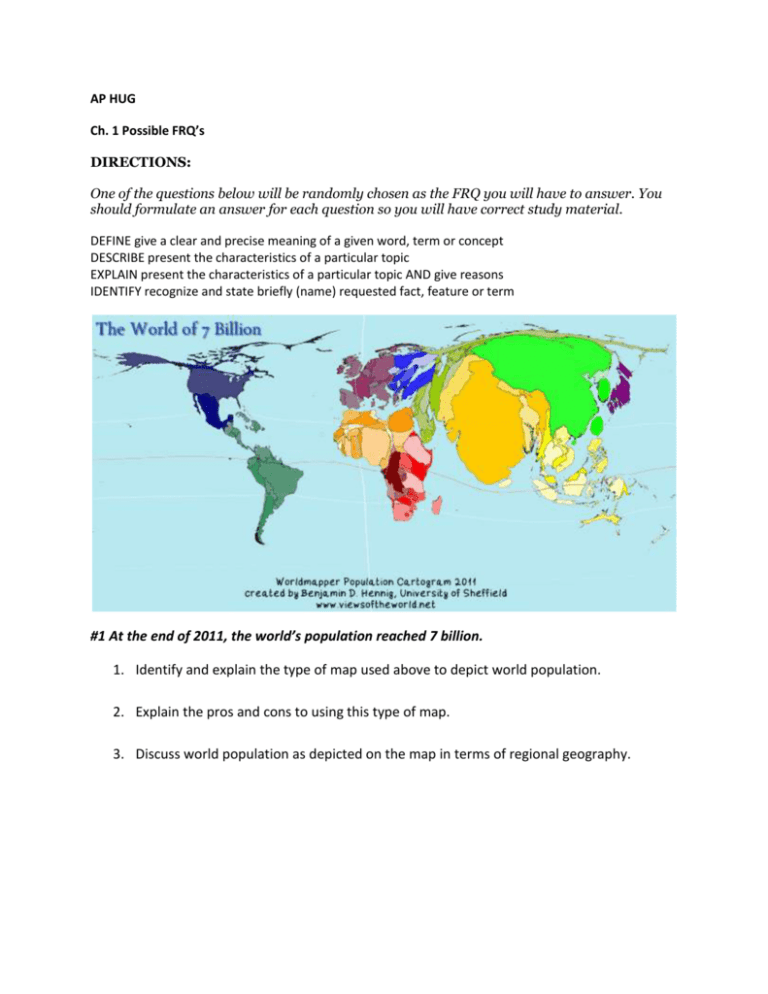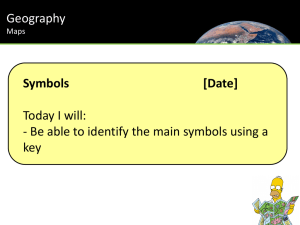APHUG Ch. 1 Possible FRQ List
advertisement

AP HUG Ch. 1 Possible FRQ’s DIRECTIONS: One of the questions below will be randomly chosen as the FRQ you will have to answer. You should formulate an answer for each question so you will have correct study material. DEFINE give a clear and precise meaning of a given word, term or concept DESCRIBE present the characteristics of a particular topic EXPLAIN present the characteristics of a particular topic AND give reasons IDENTIFY recognize and state briefly (name) requested fact, feature or term #1 At the end of 2011, the world’s population reached 7 billion. 1. Identify and explain the type of map used above to depict world population. 2. Explain the pros and cons to using this type of map. 3. Discuss world population as depicted on the map in terms of regional geography. #2 Humans utilize an imaginary grid laid out over the earth which assists us in organizing our world and positioning ourselves on it. a. IDENTIFY the circular lines that make up this global grid and in what cardinal direction(s) each are positioned on the earth? b. EXPLAIN in detail how the global grid is organized. c. IDENTIFY an example of a way that the global grid is used today. #3 A fundamental component of Human Geography involves using and thinking about maps and spatial data. Maps can be simultaneously powerful and deceiving in their ability to display spatial information. a. DESCRIBE the cartographic process: how are maps made, both traditionally and today? b. DESCRIBE how maps can be a powerful tool for understanding spatial patterns, using at least one specific example. c. DESCRIBE how maps can be deceiving, using one specific example. #4 Consider the map of nuclear power plants in the US above. a. What type of map has been used to show this information? b. What information is it able to convey? What is it not able to depict? c. What other type of map might convey this information? Think about the concepts of density, concentration, and pattern. Analyze and describe the distribution shown on the map using the specific language of a geographer. That is, describe the distribution using each of these three terms.











